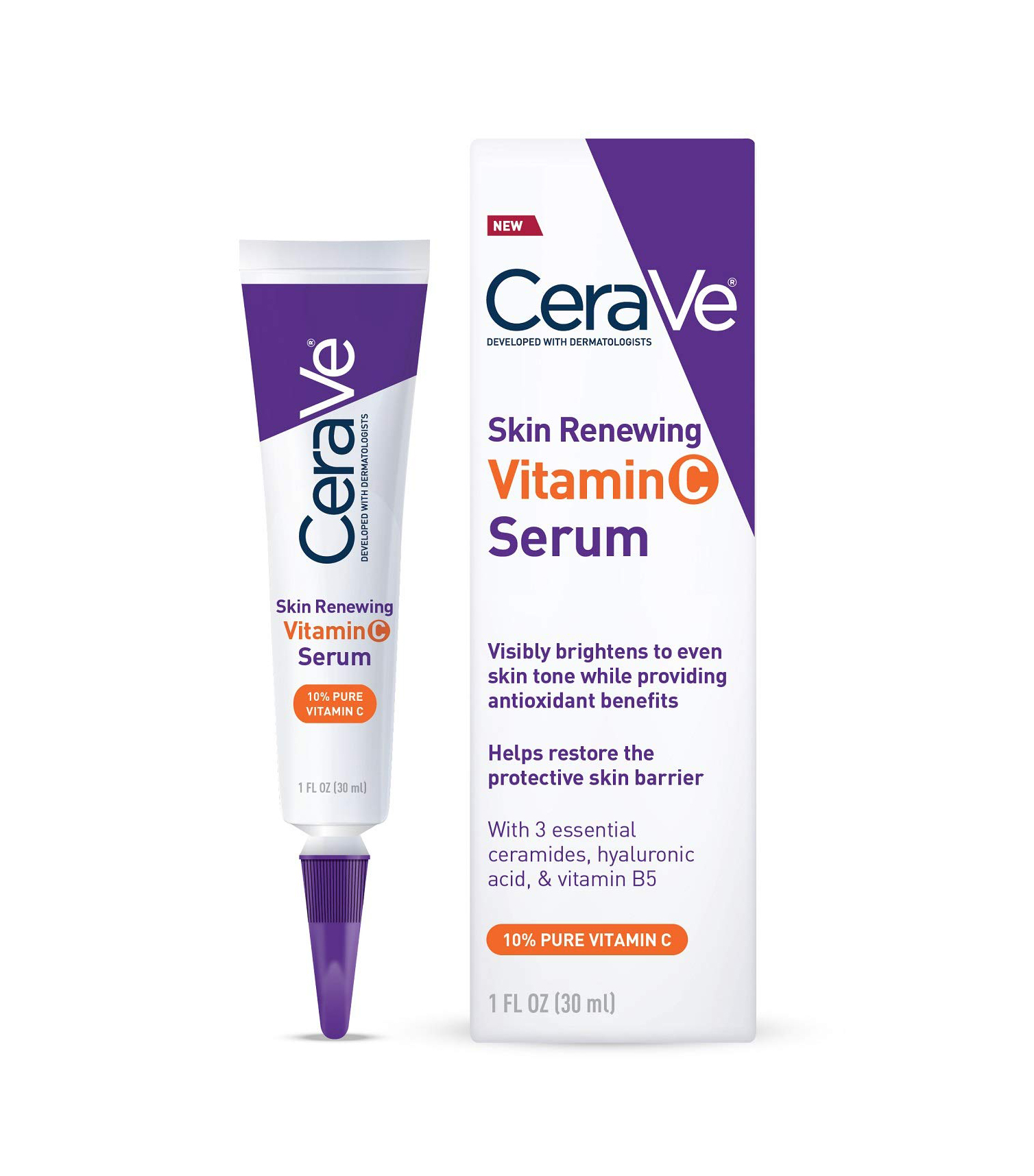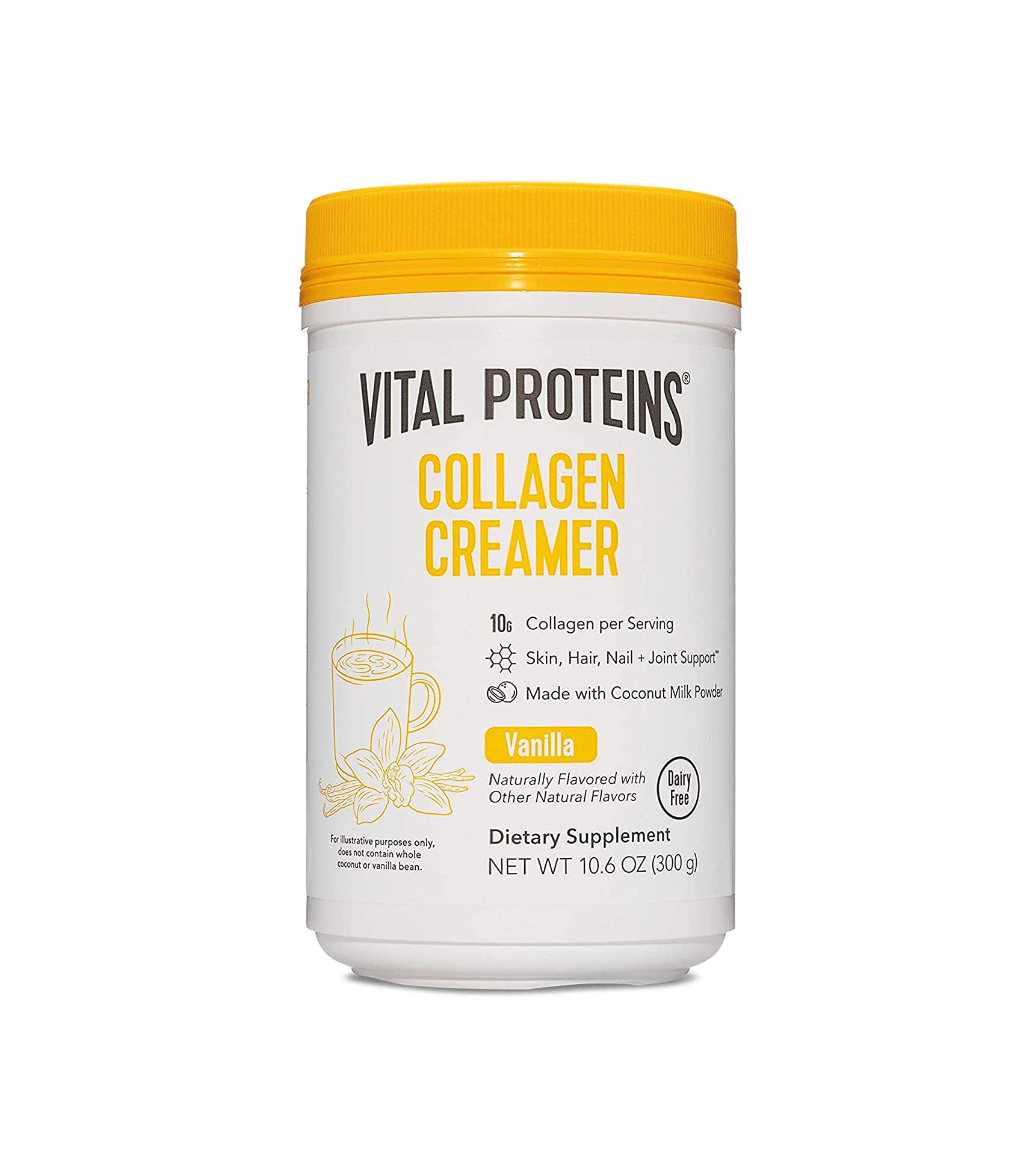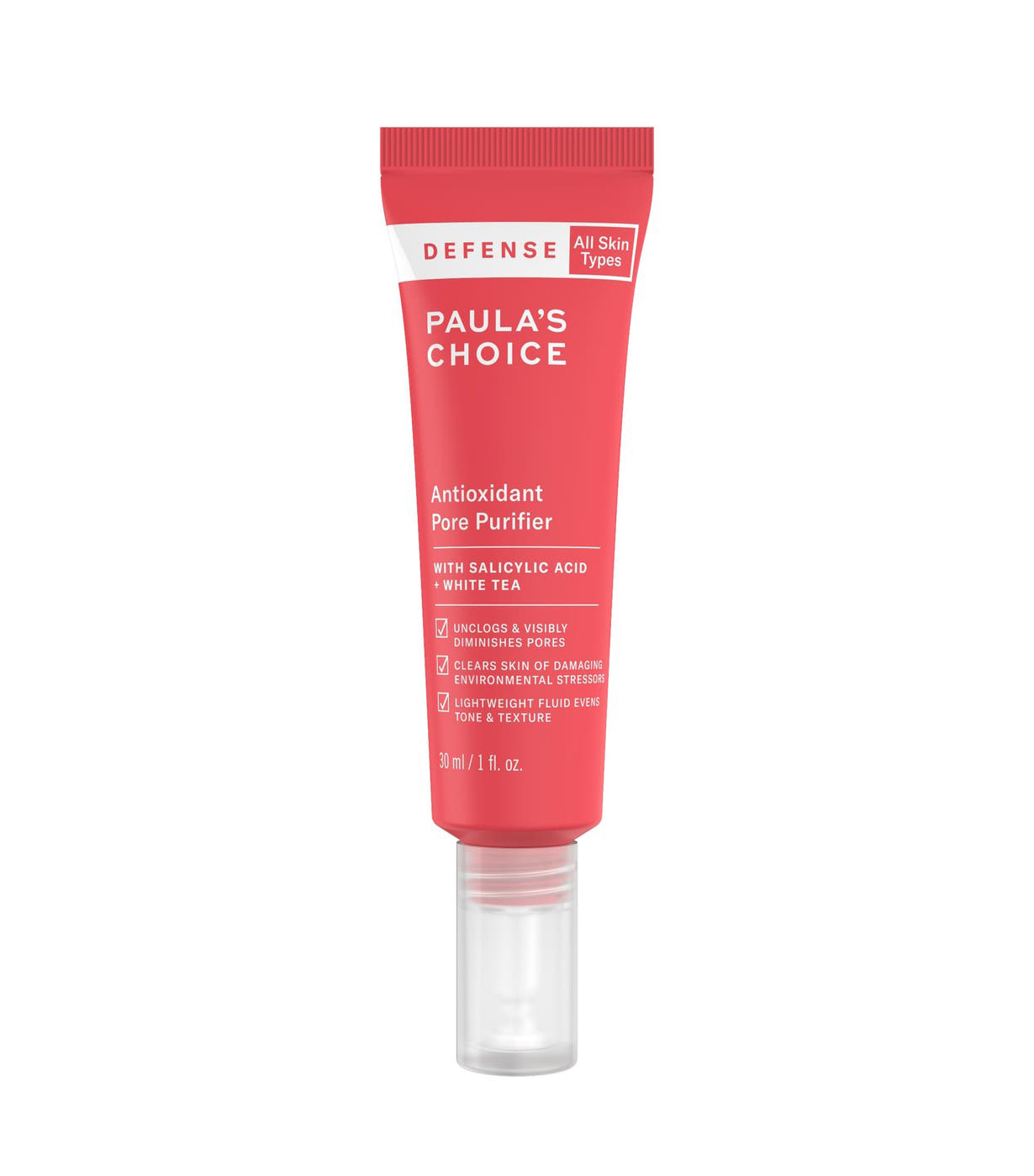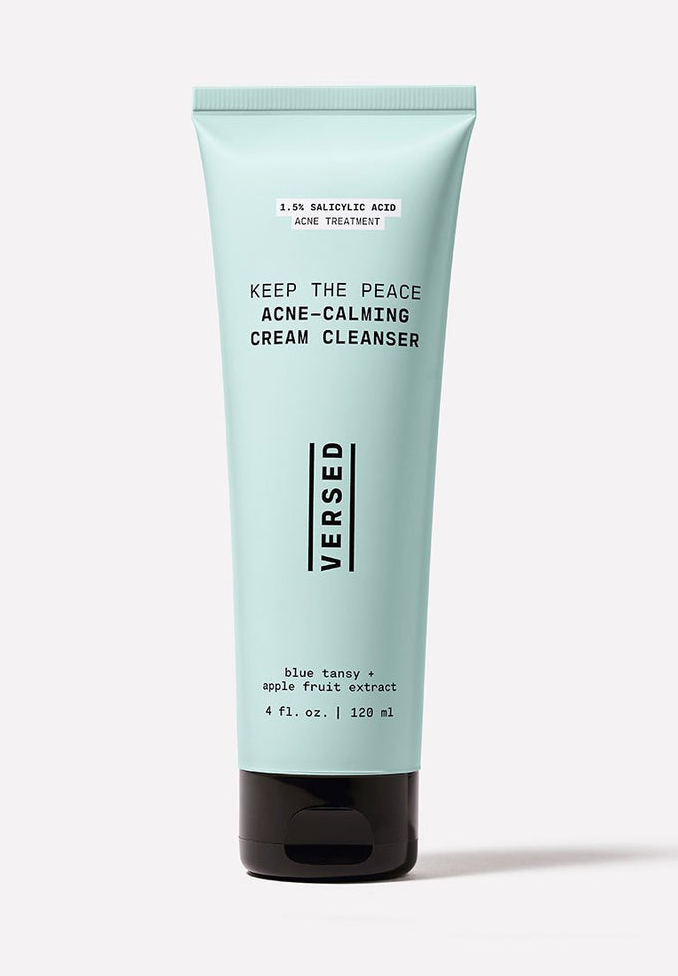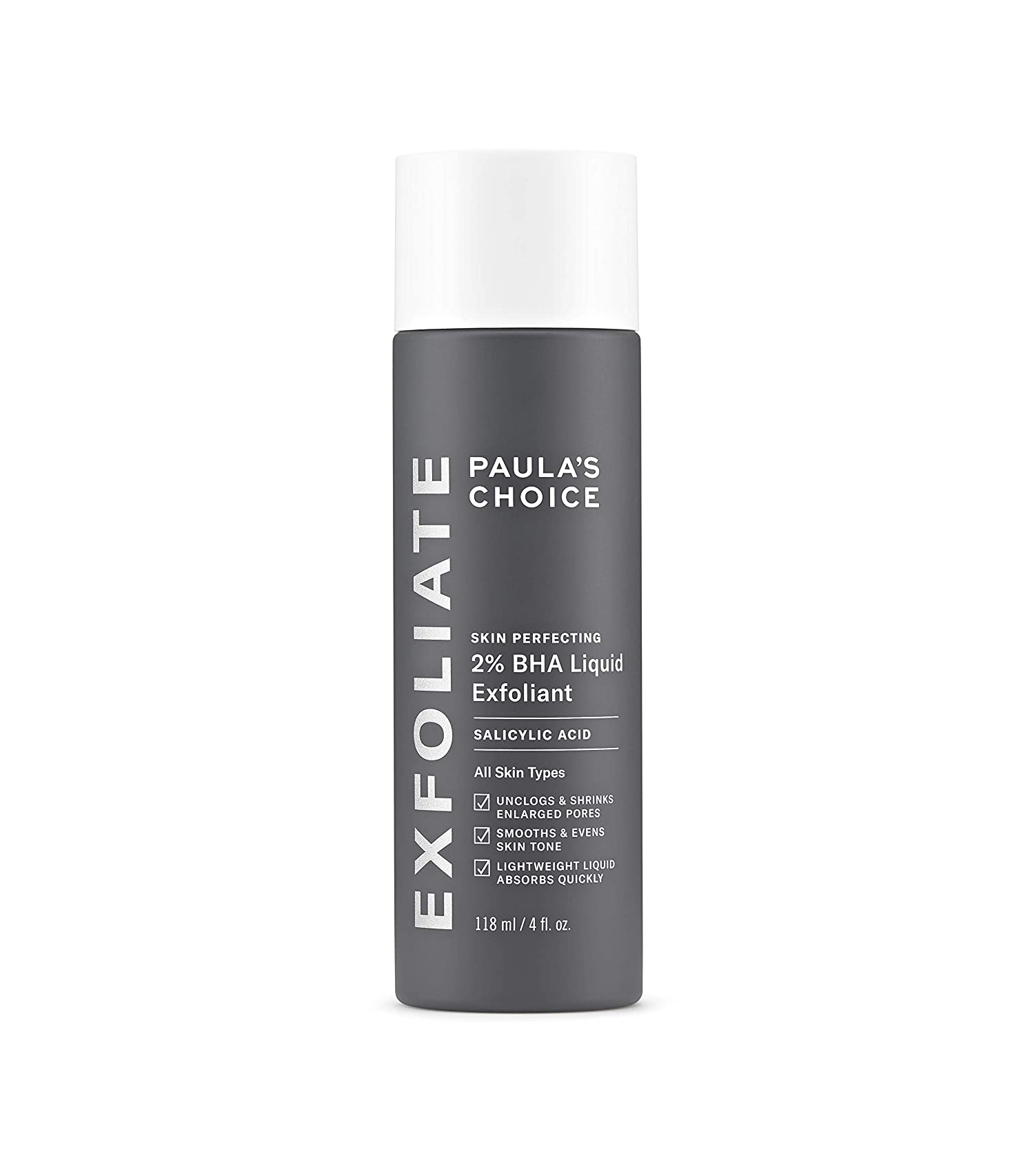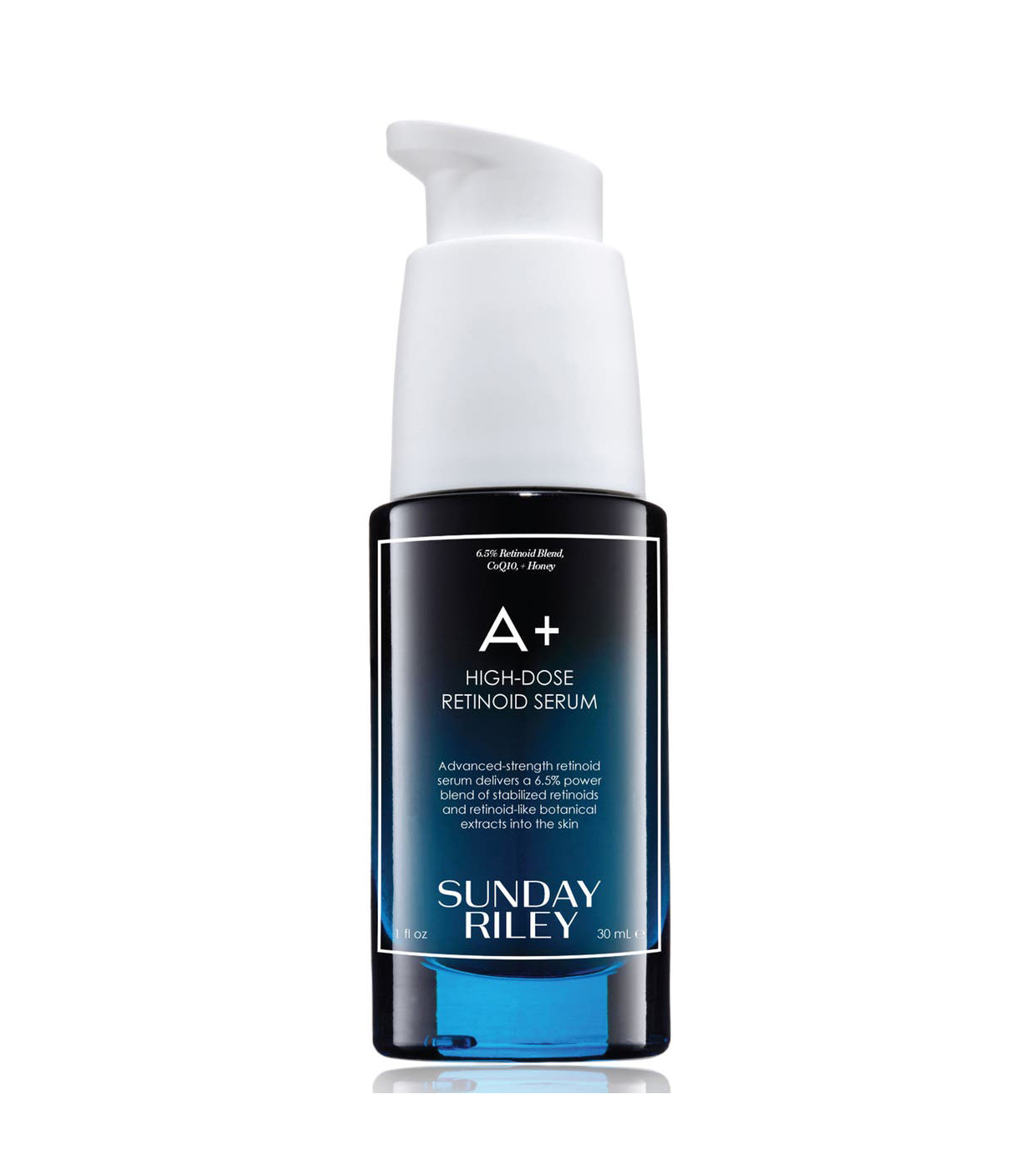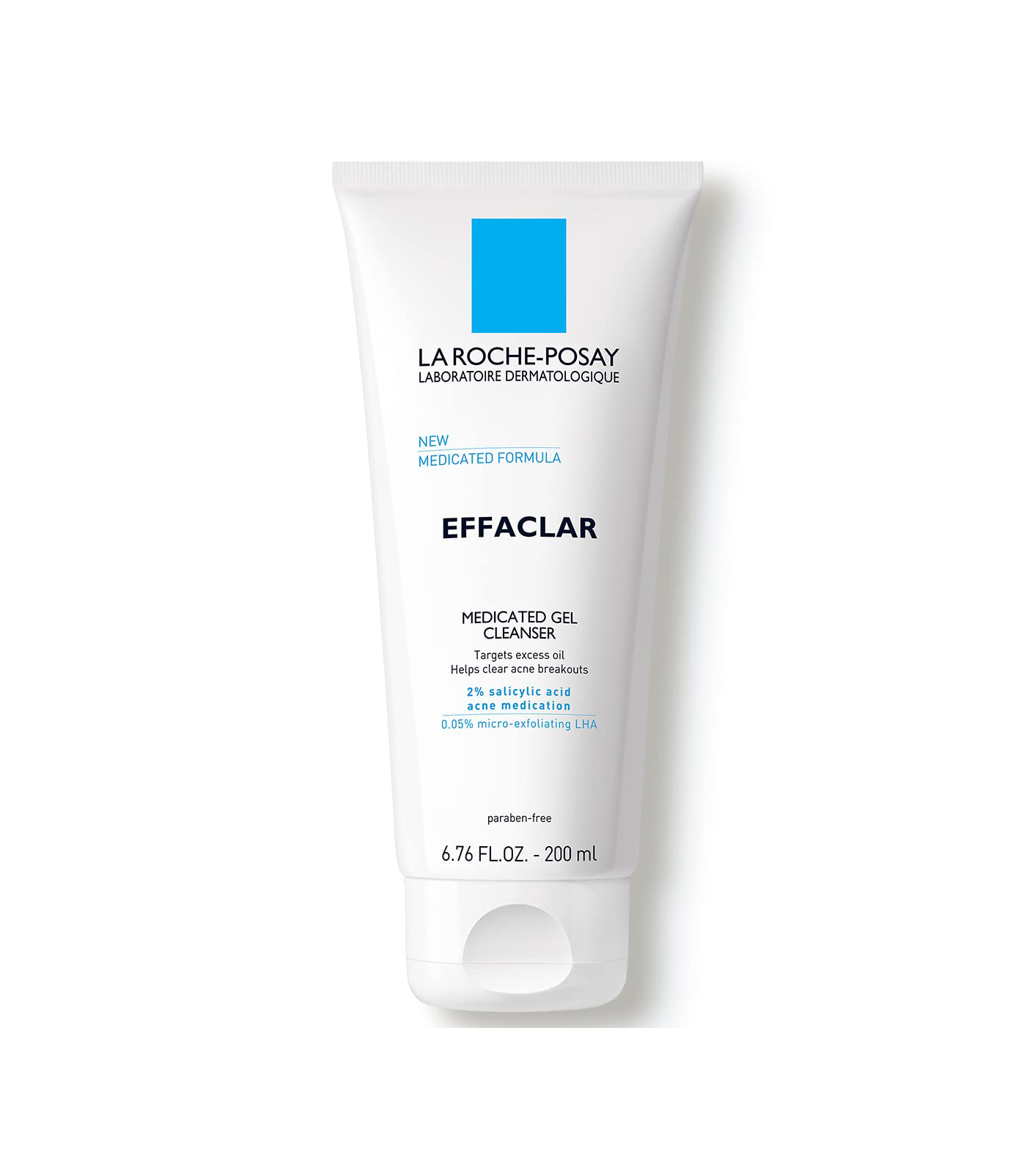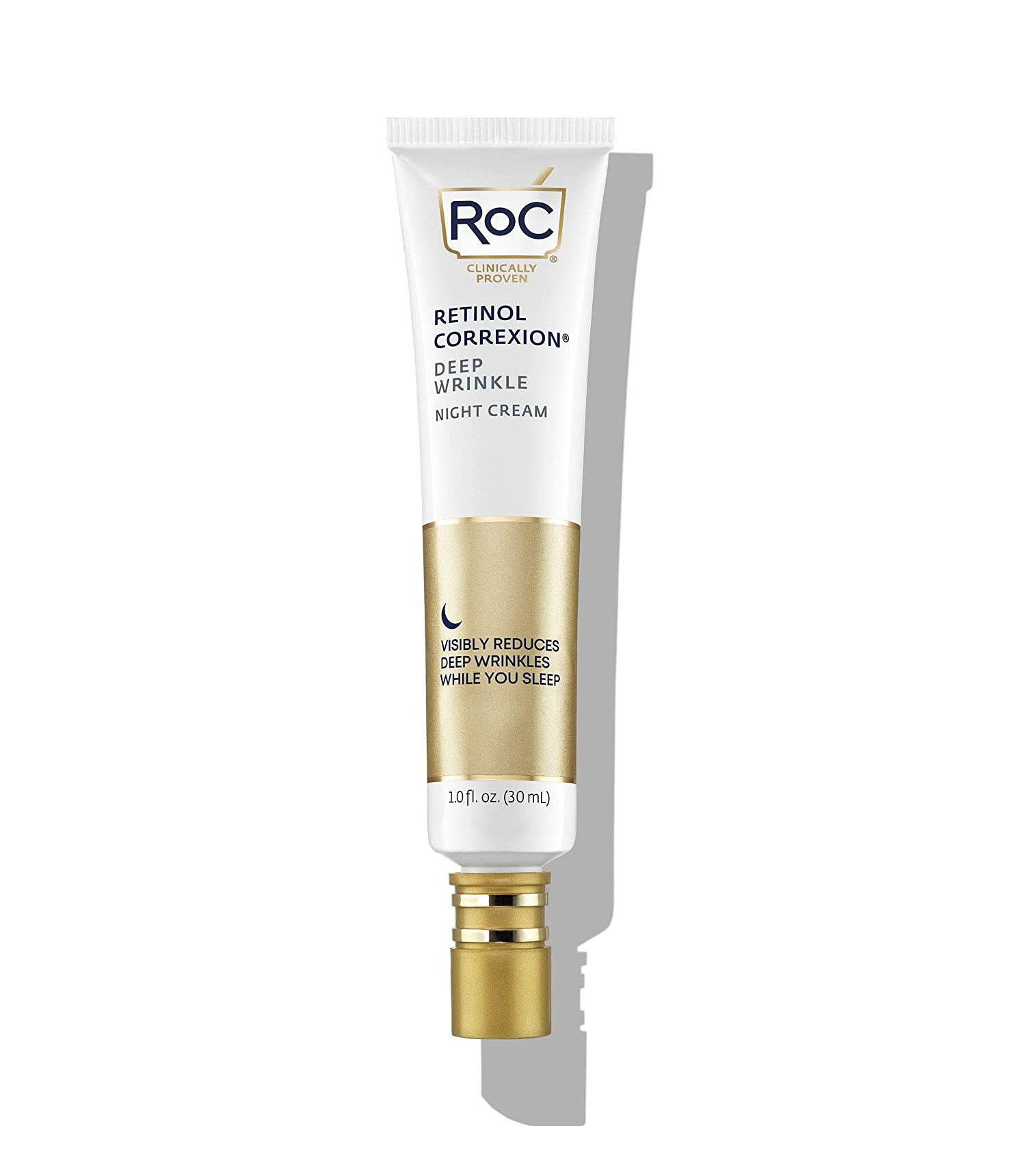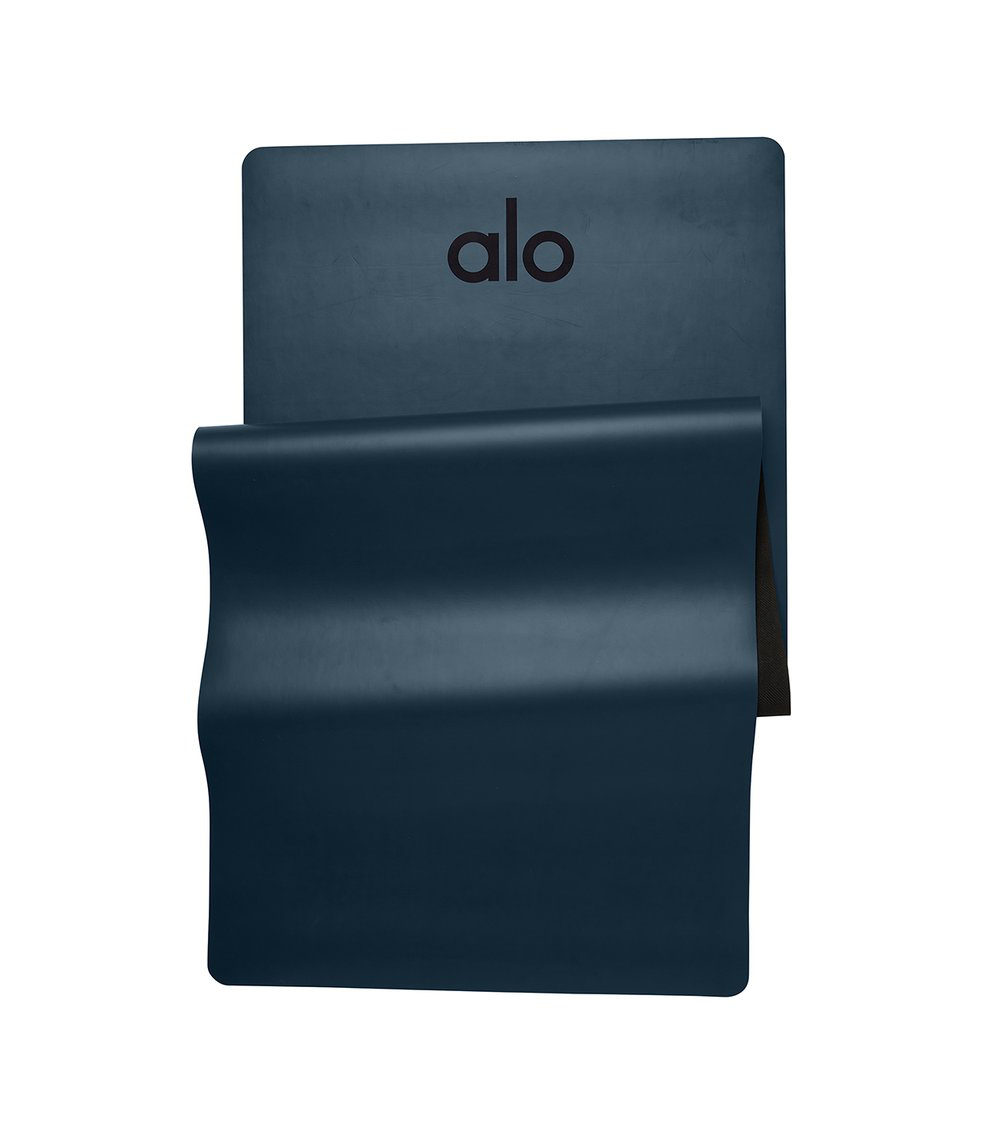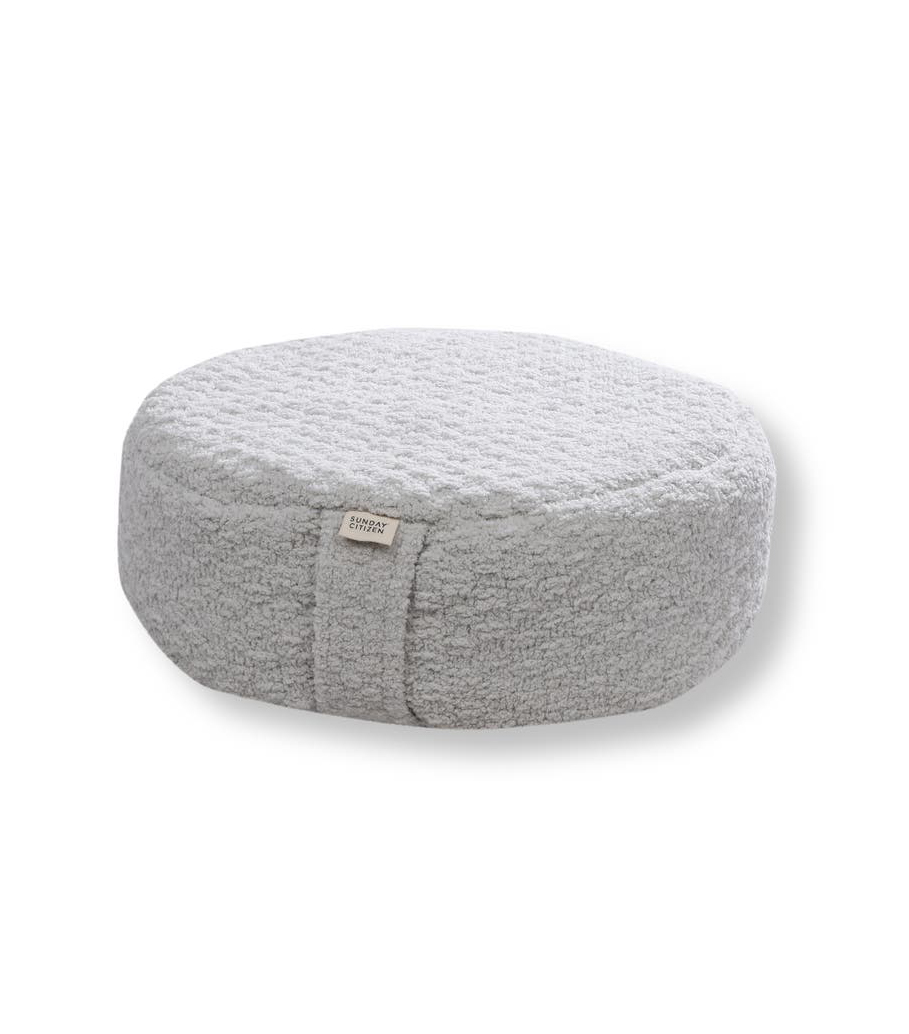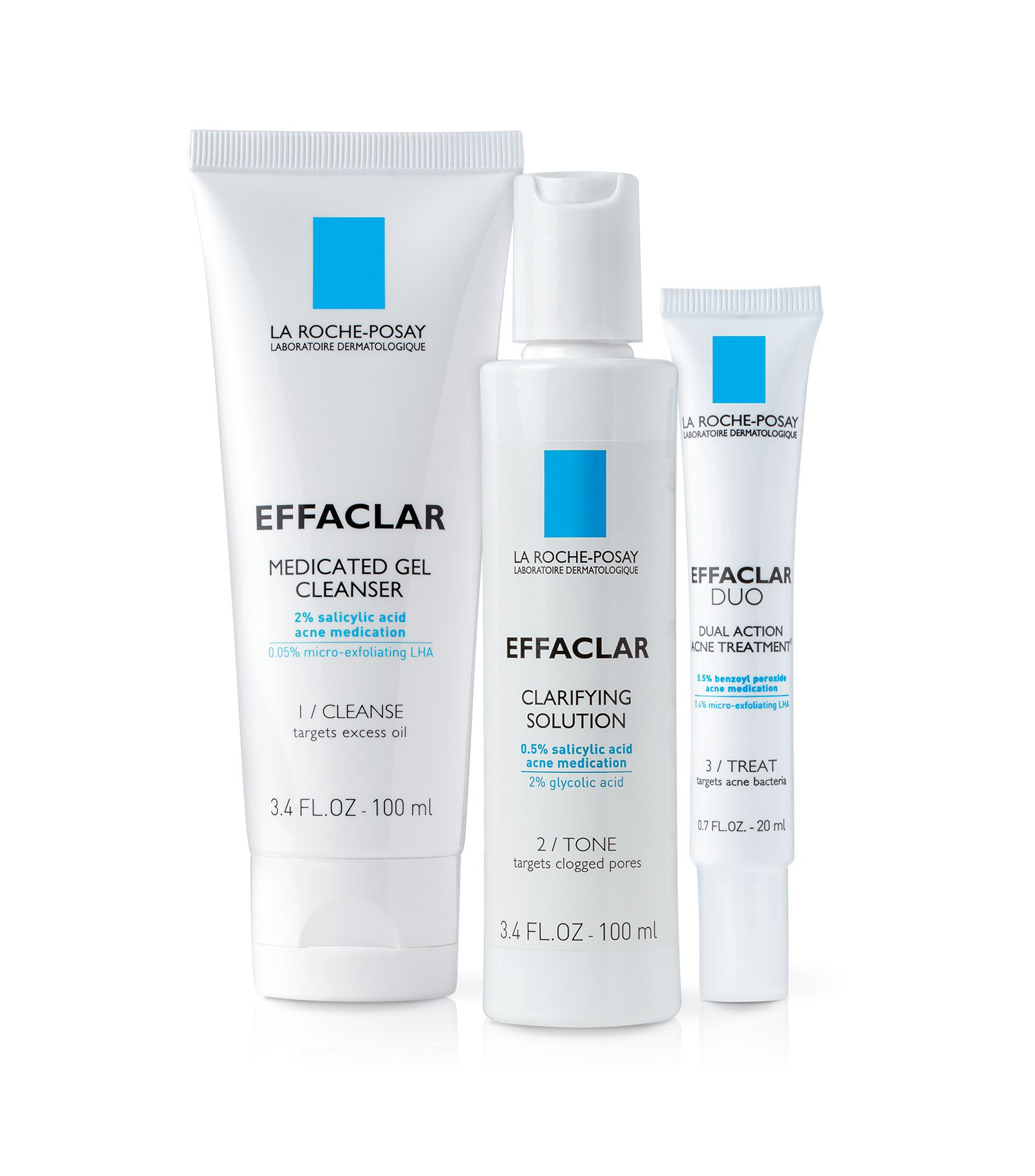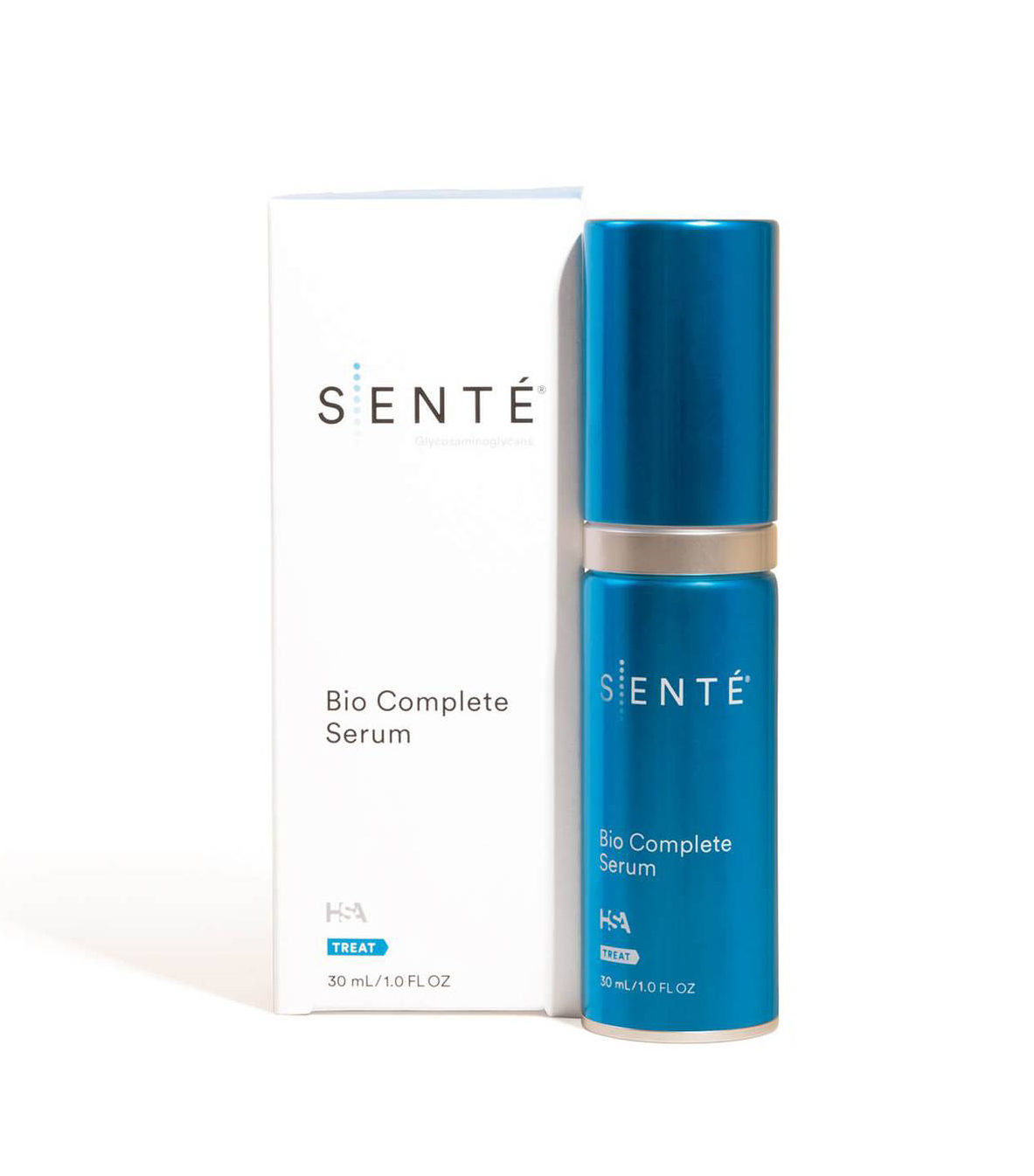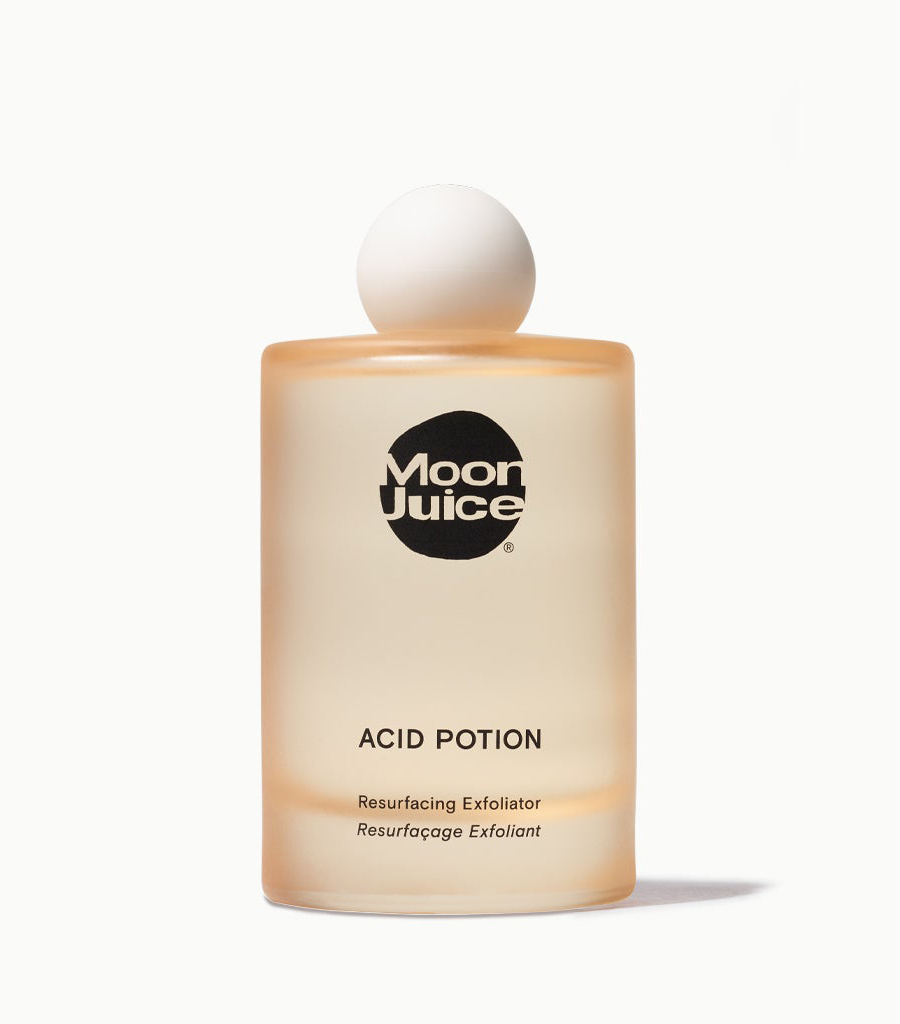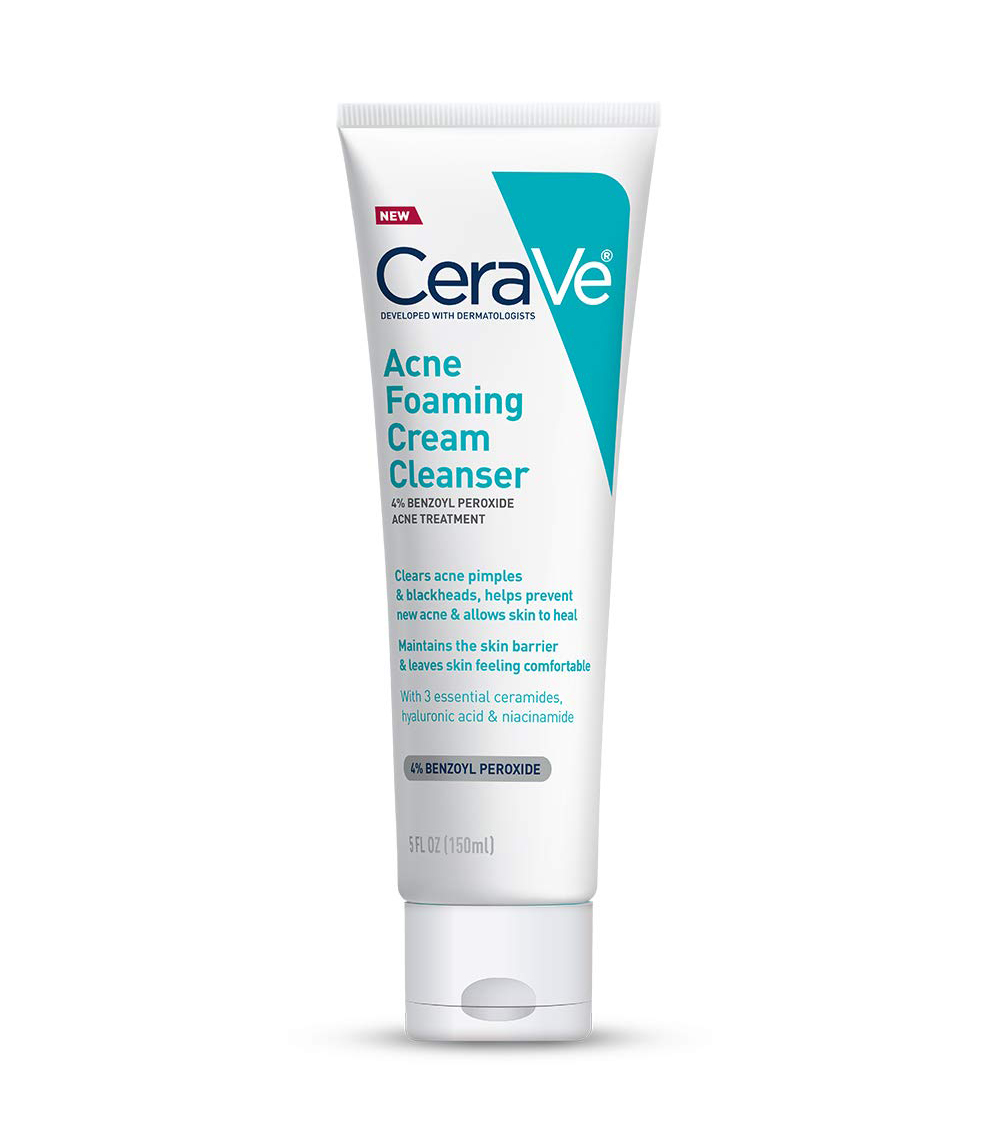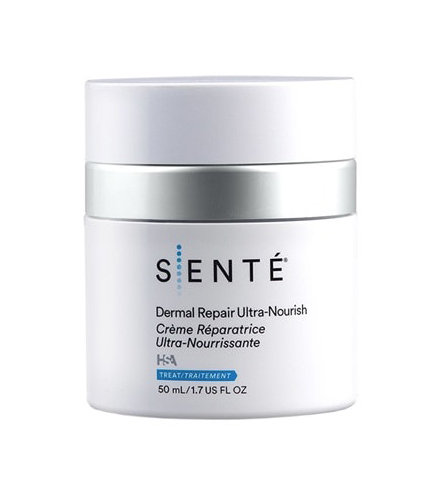Acne in Your 30s Is Real—3 Things to Try If You Can't Get in to See a Derm
When you leave your teenage years, you hope to leave behind a couple of things—awkwardness, weird fashion and beauty choices, that rollercoaster of emotions, drama, and acne. While it's not guaranteed that you'll say goodbye to all of the above (at the age of 33, I'm still haunted by a few of these), you'd think that some can be left in the dust. This is why it's so annoying when acne creeps back up again in your 30s. But, yes, unfortunately, it can happen.
As to what causes it, it can be a variety of things—which is kind of annoying if you're trying to figure out the one culprit. "Nature plus nurture! So yes, genetics play a role, but adult acne is multifactorial, meaning that stress, diet, hormones, and now even maskne are contributing factors," says Whitney Bowe, MD, who is known for her glowing skin TikTok hashtag #thatboweglow.
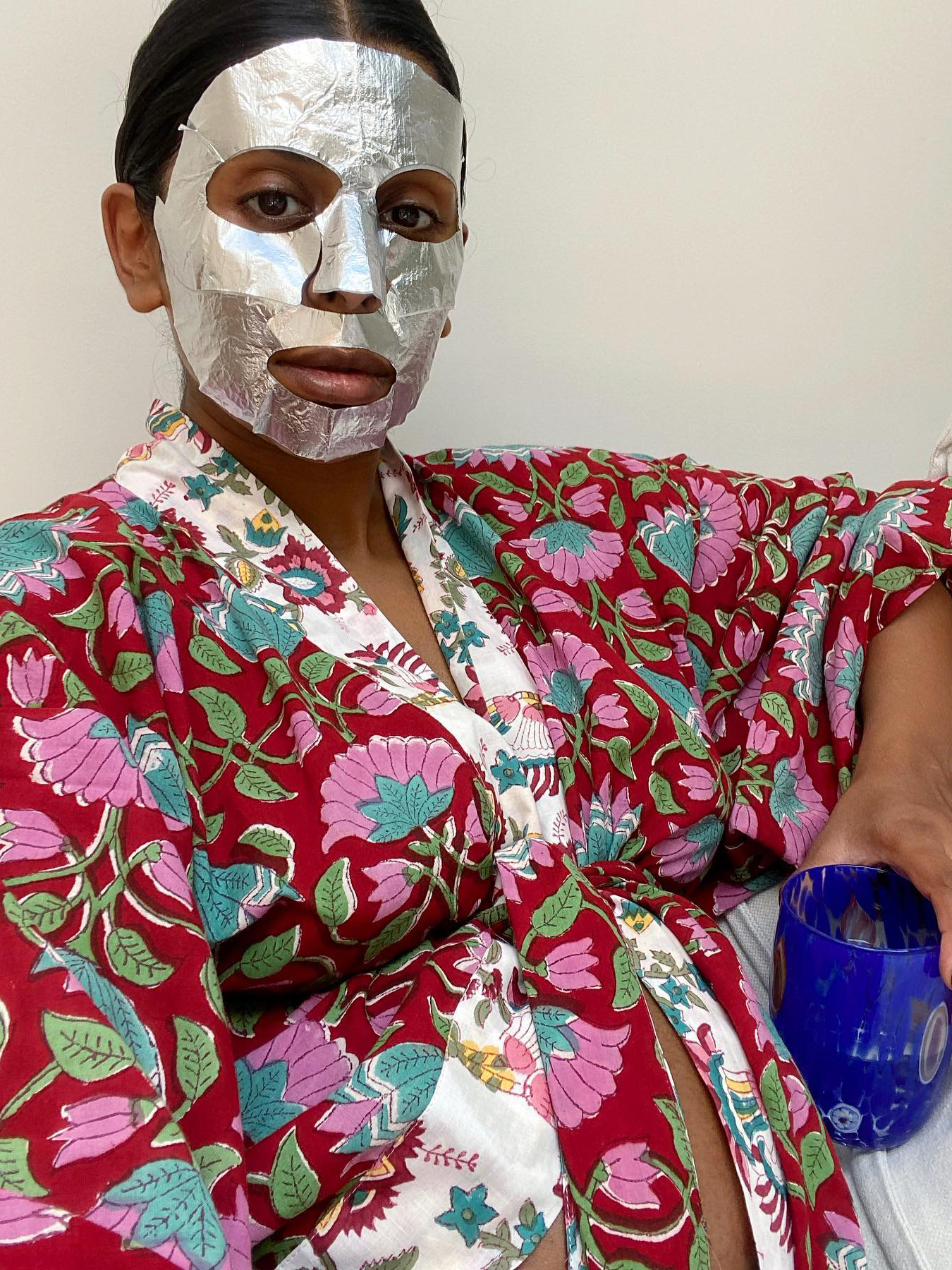
What Is Adult Acne?
So, it turns out that adult acne is a bit different from what you might have experienced in your teens. "Teen acne is caused by an increase in hormones during puberty, the average teenage diet, and genetics," explains dermatological nurse and celebrity aesthetician Natalie Aguilar. "Whereas the acne in one's 30s is typically caused by hormonal fluctuations. Hormones fluctuate during menstruation, pregnancy, times of stress, and with thyroid disorders. Additionally, women of reproductive age are more likely to experience ovarian cysts that can lead to these hormonal changes."
And where it appears differs, too. Teenage acne might show up on the upper part of the face, like your forehead and T-zone. "Adult acne usually presents on the lower part of the face like the chin and jawline, mainly due to androgens that cause excess sebum in these areas," says Ife Rodney, MD, FAAD, of Eternal Dermatology and Aesthetics. "Acne in your 30s is often deeper (cystic acne) and can leave long-lasting scars compared to teens."
Bowe adds that often in your 30s blackheads and whiteheads are often accompanied by oil production. "While most of my teen patients can tolerate pretty aggressive retinoids and salicylic acid therapies, these are not ideal for my patients in their 30s with skin that is more sensitive and prone to dehydration and irritation, so I approach adult acne differently," she explains.
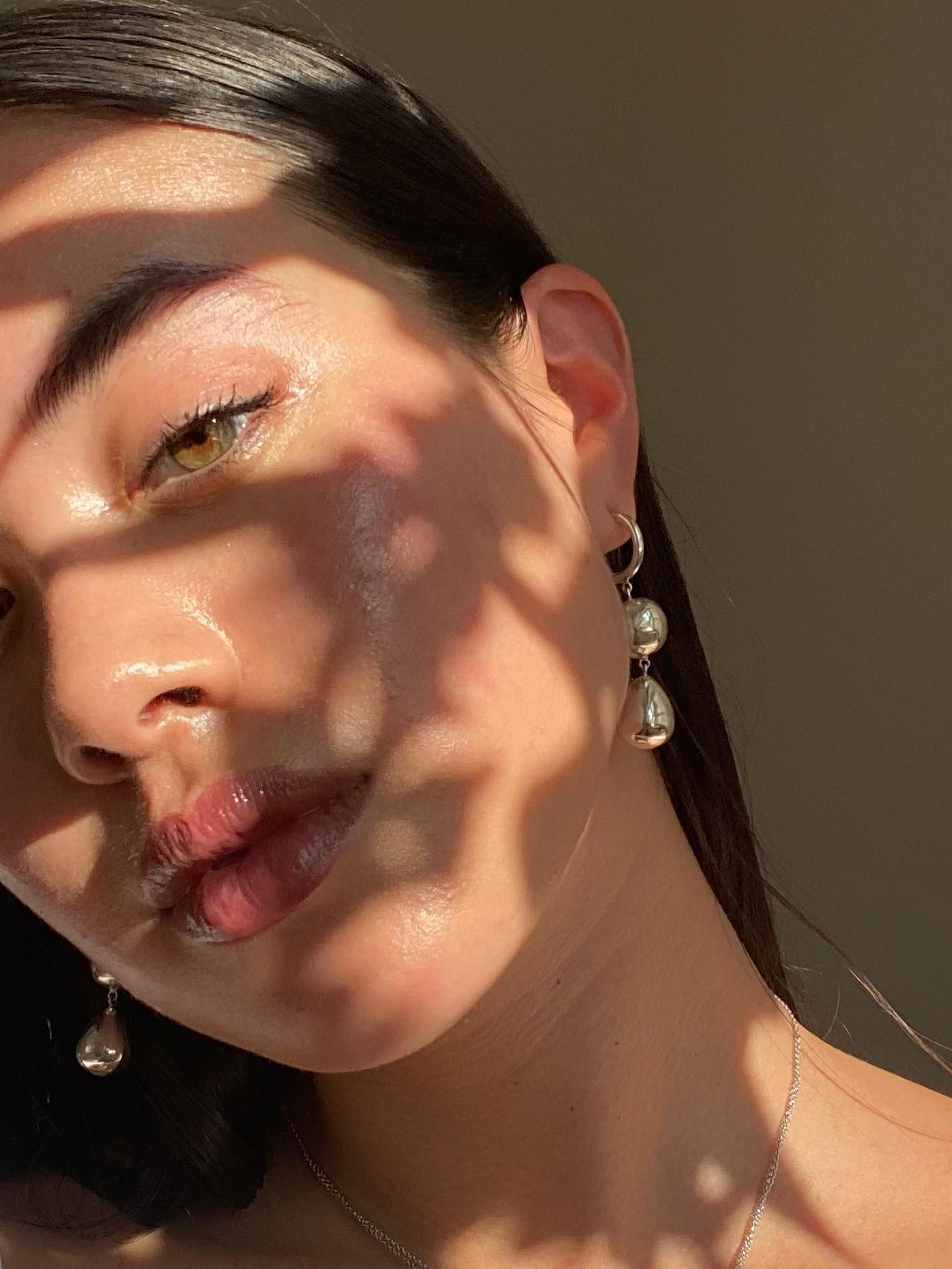
What Causes Adult Acne?
Like we learned above, there are a lot of factors that may cause acne. Some common ones are highlighted below.
Genetics: It can be just a fact of getting older. "Some of us have slower cell turnover than normal in our 30s, leading to more dead skin cells, dirt, and bacteria from the environment clogging our pores," says Rodney.
Stress: Bowe says both internal and external stressors are at play when it comes to acne. Internal might mean emotional/psychological stress and chronic sleep deprivation. And external stressors could mean the environmental kind like pollution, UV rays, IR light, and blue light. "Patients with acne typically have lower levels of cellular antioxidants and lower levels of antioxidant vitamins including A and E," Bowe explains.
"So, in people who struggle with acne, the burden of stress, the oxidative burden is higher. They do not have the resources to neutralize the free radicals and dial down that oxidative stress. Elevated levels of oxidative stress and increased free radicals can lead to something called lipid peroxidation in the sebaceous glands, so protecting skin from stress using antioxidants (both on the skin in the form of vitamin C and ferulic acid) and from within (in the form of vitamin C in your diet, carotenoids like astaxanthin and lutein polyphenols like pomegranate seeds, green tea, blueberries, and blackberries) can all help quench that free radical damage and prevent acne in the first place."
Diet: Bowe cites studies that link dairy milk with acne flashes—and skim milk can actually be worse for your skin than low-fat and whole. "Milk proteins, whey, and casein can trigger inflammation in your skin contributing to acne breakouts and possibly even accelerating signs of aging in the skin," she says. Try swapping out dairy milk for other unsweetened alternatives like almond or coconut. And the same goes for protein powders and bars. Check the label for "whey protein," which can be the reason you're breaking out. You can replace them with plant-based proteins or collagen powders.
But you don't have to say goodbye to dairy completely. Bowe says it's not all bad for the skin. "Fermented dairy (think yogurt, kefir, and skyr) can deliver some skin-supportive live probiotics. These live beneficial bacteria can bolster the microbiome and curb inflammation. Just keep an eye on the sugar—sometimes brands will sneak in added sugars that negate the other benefits," she adds.
And it's not just dairy. "Some foods like excess sugar, carbs, and processed foods can cause spikes in our insulin and blood sugar, worsening acne," explains Rodney.
Hormones: Changing hormone levels can also contribute to acne. Bowe says some patients experiencing hormonal acne might benefit from an oral prescription medication like spironolactone. "Instead, signs of inflammation and oxidative stress in the microcomedone are the precursors to acne," Bowe says. "The match that lights the acne flame and the whole inflammatory sequence is oxidative stress within the pore, called lipid peroxidation. You have these oils clogging that pore and then, with free-radical damage and oxidative stress within the environment, that stimulates inflammation. After that, the pore environment is conducive to C. acnes (formerly known as P. acnes). The inflammation starts the process, so my approach is to dial down the inflammation in the first place using antioxidants."
Too much skincare: "Using too many skin care products can clog pores and exacerbate your acne. Some are even comedogenic, meaning they are more likely to clog your pores," Rodney says.
Prescription medications: Rodney also adds that certain prescription medications can cause acne.
Dirt from makeup and masks: Both Rodney and Bowe say maskne is a real thing. Masks and makeup can leave behind bacteria which can cause breakouts.
How to Treat Adult Acne
While it might be helpful to see a dermatologist who can help you get to the root of your problem, there are some things you can start with to see if they help clear up any breakouts.
1. Create a good skincare routine: First, you should start with creating good skincare habits. "Treating acne in your 30s means a consistent day and evening skincare routine," Aguilar says. "During this decade, skincare should not just be focused on acne-fighting ingredients but also ingredients that are anti-aging in order to help prevent fine lines and wrinkles and maintain that youthful plumpness. Looking for active ingredients to help prevent acne and ingredients that are anti-aging are ideal."
Bowe gave her tips for a morning and evening routine. In the morning, she starts by cleansing with a gentle, pH-balanced cleanser. Then she applies vitamin C serum to dry skin. Next, she applies a moisturizer that is ideally fragrance-free and contains pre and post-biotics. Lastly, she applies sunscreen.
At night, she calls it "skin cycling. "It is a phrase that I coined to describe the method I use to cycle through powerful active ingredients to level up your skincare game and drive results," Bowe explains. "Skin cycling means rotating through your skincare actives at night, and it follows this signature pattern: Monday, exfoliation night; Tuesday, retinoid night; Wednesday, recovery night; Thursday, recovery night, and repeat." And when it comes to layering your skincare, Bowe suggests cleanser, serum, moisturizer, and oil as your optional final step.
2. Add retinol: Yes, retinol can also be a powerhouse acne fighter for you, too. "A good retinol is key. Retinol is a vitamin A derivative to prevent acne flares from occurring in addition to promoting skin cell turnover also helping with acne scarring!" says Christina Tewfik, a physician assistant at SkinSpirit. "Retinols can make anyone who starts very dry, so you only need a pea-size amount to the whole face starting three times a week as your skin tolerates it. Many of my patients forget to add a good moisturizer that doesn’t clog their pores. It is common for people with acne to have oily skin, but maintaining the moisture in the skin with a good thick cream is key to keep your skin from causing an overproduction of oil."
3. Make some diet and lifestyle changes: In addition to sticking to a skincare routine that works for you, you also might want to make some diet and lifestyle changes.
"For long-term health, you should look at your diet, hormone imbalances, stress, and lifestyle practices that may be causing acne," Rodney says. "Moving to a diet with fewer sugars, carbs, and processed foods while staying hydrated can help. If necessary supplements that contain antioxidants can keep free radicals at bay, reducing the chances of acne over time. Look for other external triggers like stress and find ways to reduce these stressors (yoga, meditation, counseling)."
How to Shop for Acne-Fighting Products
You'll want to prioritize a couple of ingredients. "Some of the best acne-fighting ingredients to look for include benzoyl peroxide, retinol, salicylic acid, and glycolic acid," Rodney says. "These help with cell turnover and attack your acne directly. Another helpful ingredient is bakuchiol (a plant-based retinol). Most of these acne-fighting ingredients come in prescription strength, but you can also find products over the counter."
Like Bowe said above, antioxidants can help. "Sebum can become oxidized by free radicals, a process called 'lipid peroxidation.' By neutralizing the free radicals with antioxidants, you can stop acne before the inflammation even starts," she explains. As for ingredients to avoid, Tewfik says you'll want to stay clear of lanolin or isopropyl palmitate products, which are comedogenic (aka they can clog the pores).
Aguilar also recommends shopping for products that serve a dual purpose—something with active ingredients that can heal and prevent breakouts and also provide anti-aging benefits. Some anti-aging ingredients include hyaluronic acid, collagen, and peptides.
And if you're looking for some products to shop, check out some recs from the experts below.
Products to Shop
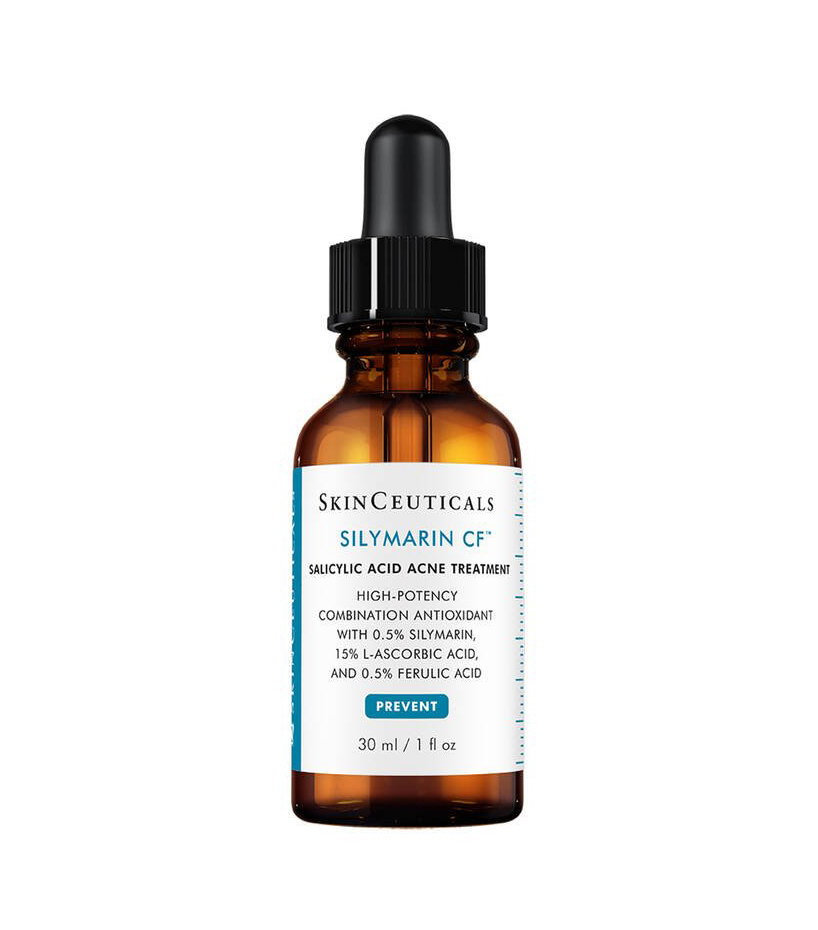
"Vitamin C serum, such as SkinCeuticals' Silymarin CF serum, is one of the products I regularly recommend to my acne-prone patients, but I recommend a vitamin C antioxidant serum to all of my patients even if they don't have acne. I use vitamin C serum every single morning to optimize my skin health," Bowe says.
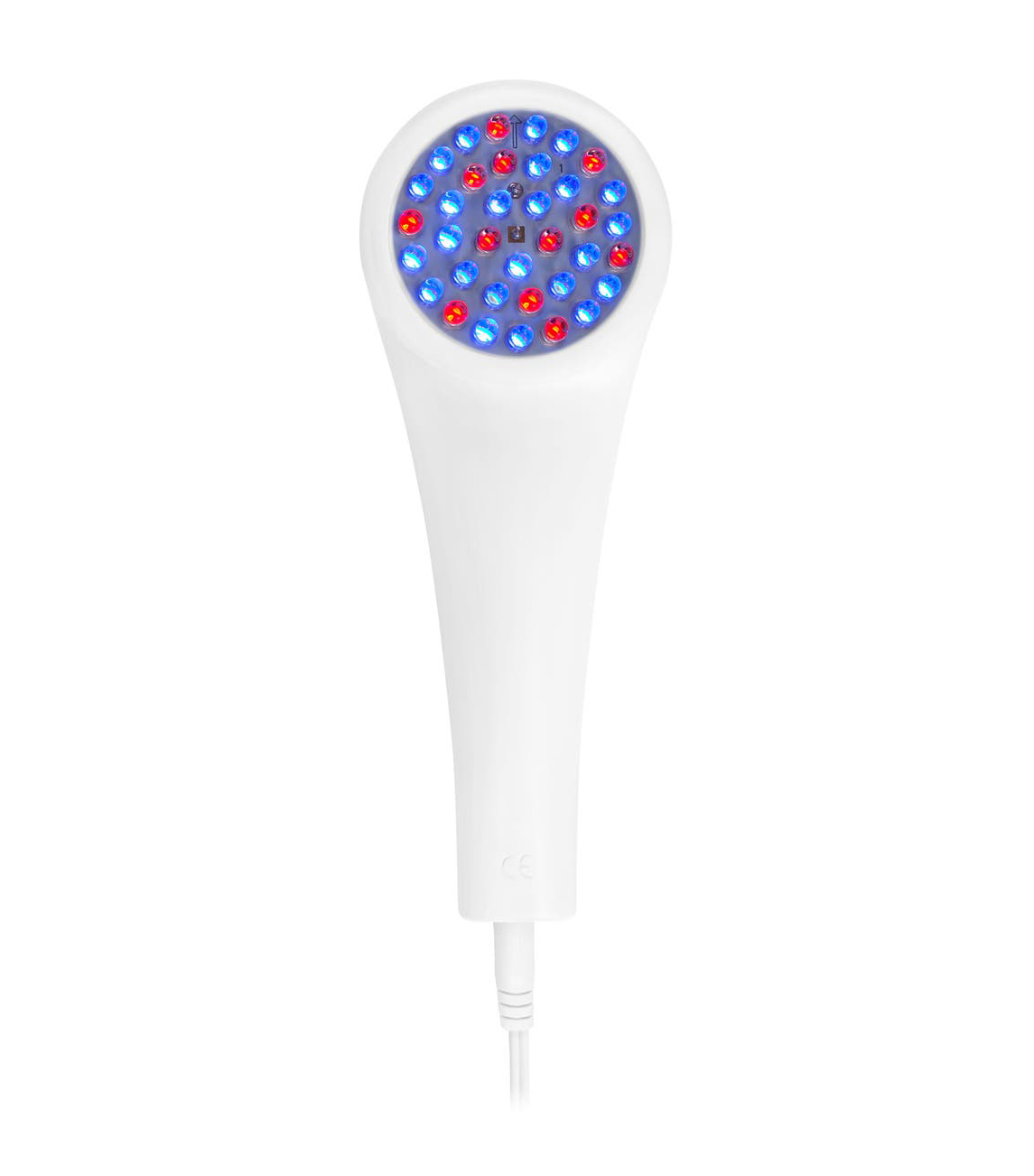
Aguilar says blue-light therapy helps soothe inflammation, irritation, and can destroy acne-causing bacteria. She adds that it's a beneficial treatment because it can be used often, is effective, and you don't have to worry about allergic to ingredients because there are none. "I really love the at-home LightStim LED for Acne," Aguilar says. "This amazing LED device is my personal favorite because it addresses both anti-aging and acne. It has dense bulbs and plenty of them in order to deliver a healing blend of therapeutic blue lights. It's portable, and because of its small head, it can be used on the full face, neck, hands, and body. Its built-in timer makes treatment so easy as it lets you know when it's time to move on to the next area. Some facial LED devices come on a mask shape making it impossible to treat other areas of the body."
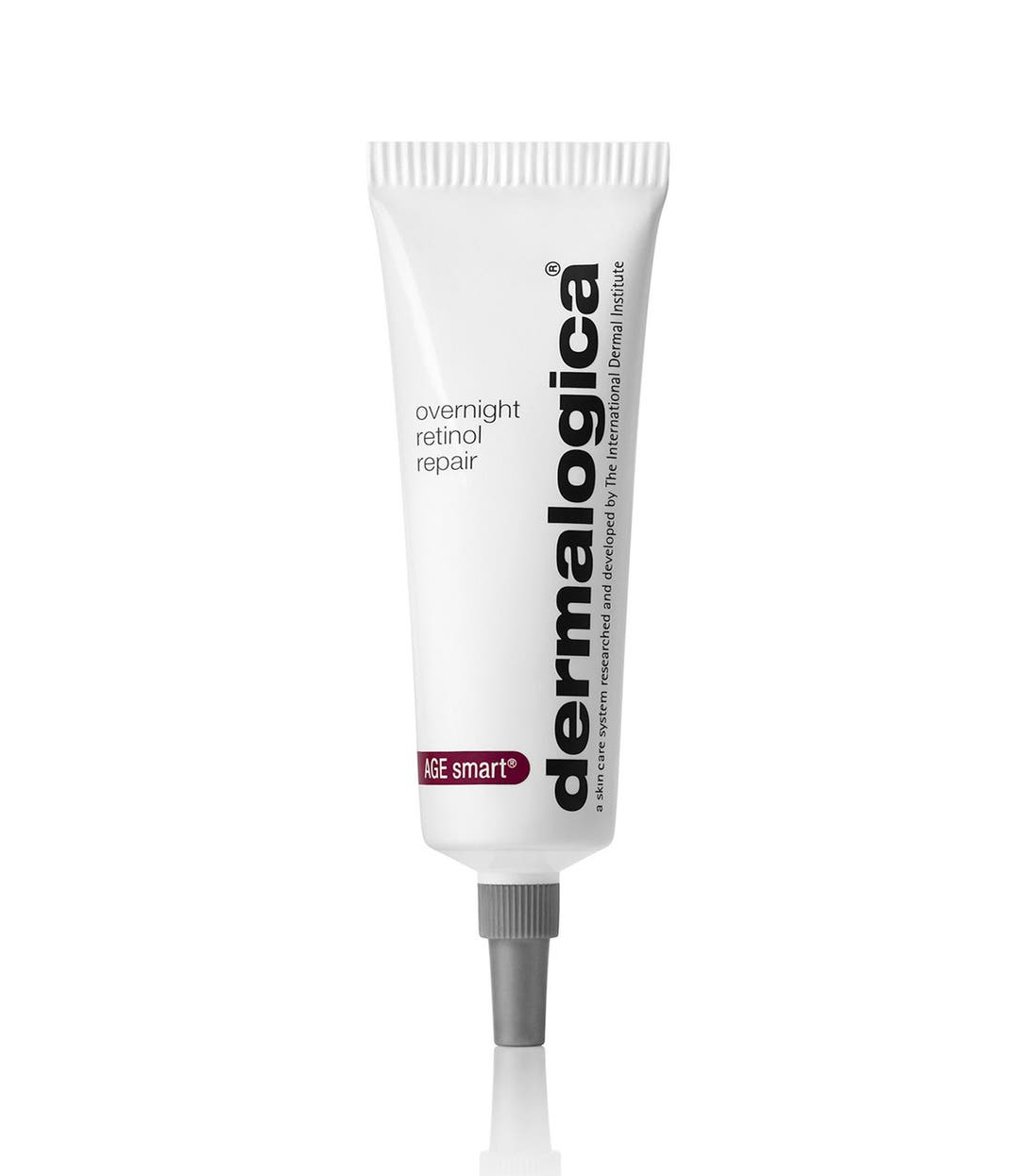
"One of my favorite retinol products for acne-prone skin in your 30s is Dermalogica's Overnight Retinol Repair," Bowe says. "It is a gentle, but effective retinol, which I find is very non-irritating in my adult acne patients. It comes with a buffer cream so that you can personalize the amount of retinol versus buffer cream for your skin's needs. It is very gentle on the skin barrier as compared to many other retinol products."
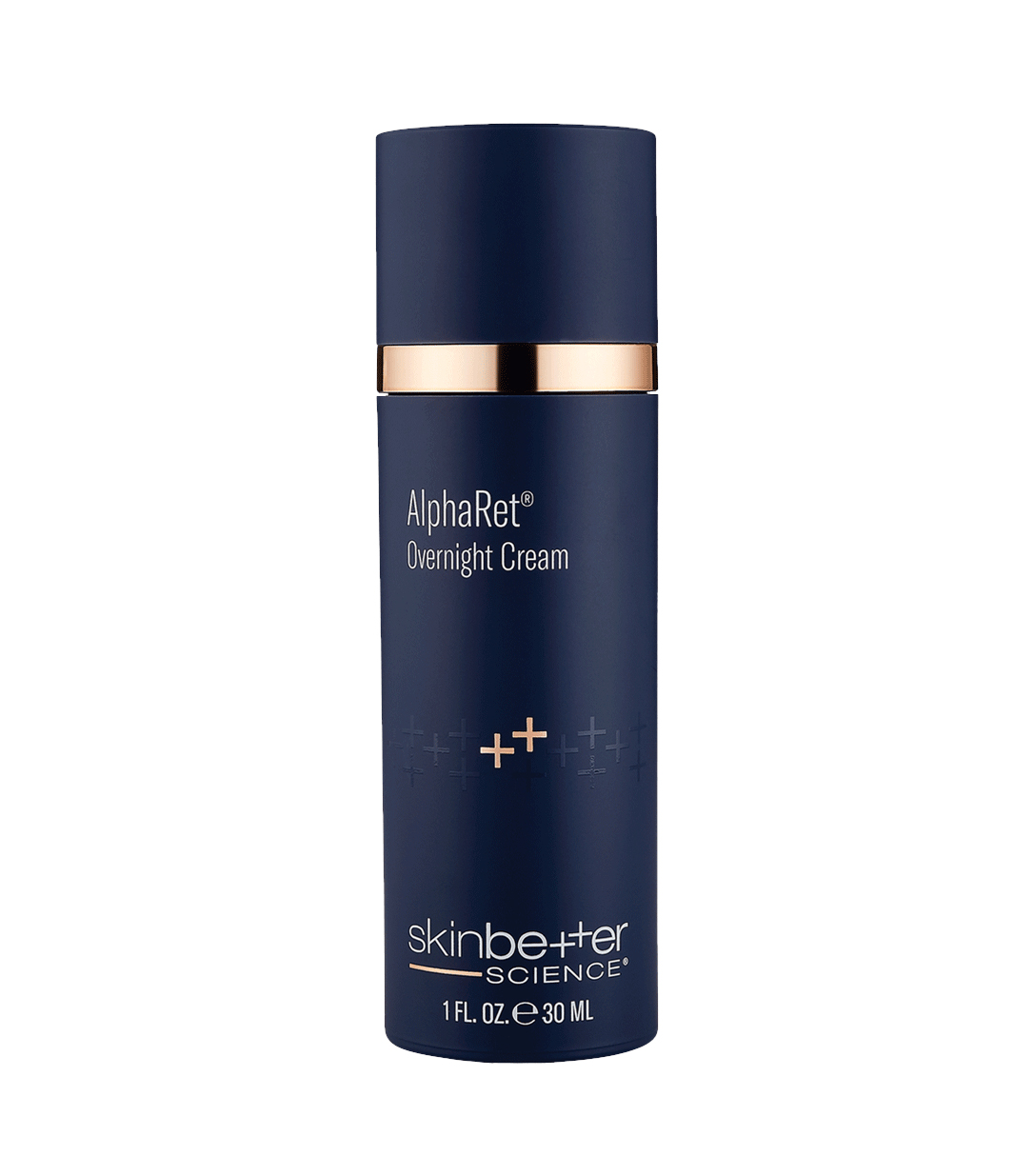
Tewfink recommends SkinBetter's AlphaRet. It's an overnight cream that is a retinoid combined with an alpha hydroxy acid.
Next: 9 Common Skincare Ingredients You'll Want to Avoid If You Have Acne
Sarah is lifestyle writer and editor with over 10 years of experience covering health and wellness, interior design, food, beauty, and tech. Born and raised in Los Angeles, she attended New York University and lived in New York for 12 years before returning to L.A. in 2019. In addition to her work atBest Knockoff Luxury Clothing , she held editor roles at Apartment Therapy, Real Simple, House Beautiful, Elle Decor, and The Bump (sister site of The Knot). She has a passion for health and wellness, but she especially loves writing about mental health. Her self-care routine consists of five things: a good workout, “me” time on the regular, an intriguing book/podcast/playlist to unwind after a long day, naps, and decorating her home.
